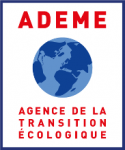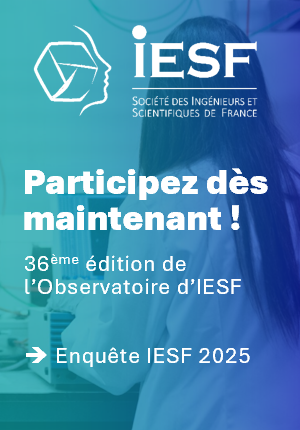Rôle de l'habitat dans l'évolution et la diversification des motifs colorés des poissons-dard (genre Etheostoma) // Role of Habitat in the Evolution and Diversification of Color Patterns in Darter Fishes (Genus Etheostoma)
|
ABG-130500
ADUM-62715 |
Sujet de Thèse | |
| 04/04/2025 |
Université de Montpellier
Montpellier cedex 5 - France
Rôle de l'habitat dans l'évolution et la diversification des motifs colorés des poissons-dard (genre Etheostoma) // Role of Habitat in the Evolution and Diversification of Color Patterns in Darter Fishes (Genus Etheostoma)
biologie évolutive, analyses comparatives, communication visuelle, poissons
evolutionary biology, comparative analyses, visual communication, fish
evolutionary biology, comparative analyses, visual communication, fish
Description du sujet
Comprendre l'origine de la diversité des formes et des couleurs dans le monde animal demeure un des grands sujets de recherche en biologie évolutive. Pourquoi certaines espèces ont des taches là où d'autres ont des barres ? Pourquoi des espèces génétiquement proches arborent souvent des couleurs très différentes ? Une explication possible est l'existence de biais perceptuels et cognitifs, qui sont déterminés par les environnements visuels dans lesquels les espèces évoluent, et qui rendent certains motifs colorés plus cryptiques (sélection naturelle pour le camouflage) ou, à l'inverse, plus attractifs (sélection sexuelle). Cette thèse utilisera des analyses phylogénétiques comparatives couplées à des analyses de vision par ordinateur (méthodes classiques et IA) pour étudier les motifs colorés dans une large radiation de poissons des rivières nord-américaines (genre Etheostoma; plus de 200 espèces). Le premier objectif sera d'étudier par quels mécanismes et dans quelle mesure l'environnement visuel influence la diversification des motifs colorés. Le second objectif sera de tester l'hypothèse selon laquelle un motif de camouflage peut constituer une exaptation évoluant secondairement en signal sexuel.
------------------------------------------------------------------------------------------------------------------------------------------------------------------------
------------------------------------------------------------------------------------------------------------------------------------------------------------------------
Understanding the origin of the diversity of forms and colors in the animal kingdom remains one of the major research topics in evolutionary biology. Why do some species have spots while others have stripes? Why do genetically related species often display very different colors? One possible explanation is the existence of perceptual and cognitive biases, determined by the visual environments in which species evolve, which make certain color patterns more cryptic (natural selection for camouflage) or, conversely, more attractive (sexual selection). This thesis will combine comparative phylogenetic analyses with computer vision techniques (both classical methods and AI) to study color patterns in a broad radiation of North American river fishes (Etheostoma genus; over 200 species). The first objective will be to investigate the mechanisms by which, and the extent to which, the visual environment influences the diversification of color patterns. The second objective will be to test the hypothesis that a camouflage pattern can serve as an exaptation, secondarily evolving into a sexual signal.
------------------------------------------------------------------------------------------------------------------------------------------------------------------------
------------------------------------------------------------------------------------------------------------------------------------------------------------------------
Début de la thèse : 01/10/2025
------------------------------------------------------------------------------------------------------------------------------------------------------------------------
------------------------------------------------------------------------------------------------------------------------------------------------------------------------
Understanding the origin of the diversity of forms and colors in the animal kingdom remains one of the major research topics in evolutionary biology. Why do some species have spots while others have stripes? Why do genetically related species often display very different colors? One possible explanation is the existence of perceptual and cognitive biases, determined by the visual environments in which species evolve, which make certain color patterns more cryptic (natural selection for camouflage) or, conversely, more attractive (sexual selection). This thesis will combine comparative phylogenetic analyses with computer vision techniques (both classical methods and AI) to study color patterns in a broad radiation of North American river fishes (Etheostoma genus; over 200 species). The first objective will be to investigate the mechanisms by which, and the extent to which, the visual environment influences the diversification of color patterns. The second objective will be to test the hypothesis that a camouflage pattern can serve as an exaptation, secondarily evolving into a sexual signal.
------------------------------------------------------------------------------------------------------------------------------------------------------------------------
------------------------------------------------------------------------------------------------------------------------------------------------------------------------
Début de la thèse : 01/10/2025
Nature du financement
Précisions sur le financement
Concours GAIA
Présentation établissement et labo d'accueil
Université de Montpellier
Etablissement délivrant le doctorat
Université de Montpellier
Ecole doctorale
584 GAIA - Biodiversité, Agriculture, Alimentation, Environnement, Terre, Eau
Profil du candidat
Nous cherchons un.e étudiant.e très motivé.e avec une formation principale en biologie évolutive avec intérêt particulier pour l'évolution phénotypique, l'écologie sensorielle, la programmation informatique et la vision par ordinateur. L'étudiant.e devra être à l'aise en programmation R et posséder des bases en Python. Une formation principale en informatique est éligible si l'étudiant.e démontre un intérêt pour les questions de biologie évolutive et/ou des compétences naturalistes fortes.
We are looking for a highly motivated student with a primary background in evolutionary biology and a particular interest in phenotypic evolution, sensory ecology, computer programming, and image processing. The candidate should be proficient in R programming and have basic skills in Python. A primary background in computer science is also eligible, provided the candidate demonstrates a strong interest in evolutionary biology and strong naturalist skills.
We are looking for a highly motivated student with a primary background in evolutionary biology and a particular interest in phenotypic evolution, sensory ecology, computer programming, and image processing. The candidate should be proficient in R programming and have basic skills in Python. A primary background in computer science is also eligible, provided the candidate demonstrates a strong interest in evolutionary biology and strong naturalist skills.
05/05/2025
Postuler
Fermer
Vous avez déjà un compte ?
Nouvel utilisateur ?
Besoin d'informations sur l'ABG ?
Vous souhaitez recevoir nos infolettres ?
Découvrez nos adhérents
 SUEZ
SUEZ  ASNR - Autorité de sûreté nucléaire et de radioprotection - Siège
ASNR - Autorité de sûreté nucléaire et de radioprotection - Siège  MabDesign
MabDesign  ADEME
ADEME  Nokia Bell Labs France
Nokia Bell Labs France  Tecknowmetrix
Tecknowmetrix  Laboratoire National de Métrologie et d'Essais - LNE
Laboratoire National de Métrologie et d'Essais - LNE  Aérocentre, Pôle d'excellence régional
Aérocentre, Pôle d'excellence régional  CASDEN
CASDEN  Groupe AFNOR - Association française de normalisation
Groupe AFNOR - Association française de normalisation  ONERA - The French Aerospace Lab
ONERA - The French Aerospace Lab  PhDOOC
PhDOOC  Institut Sup'biotech de Paris
Institut Sup'biotech de Paris  MabDesign
MabDesign  CESI
CESI  TotalEnergies
TotalEnergies  ANRT
ANRT  Généthon
Généthon  Ifremer
Ifremer





